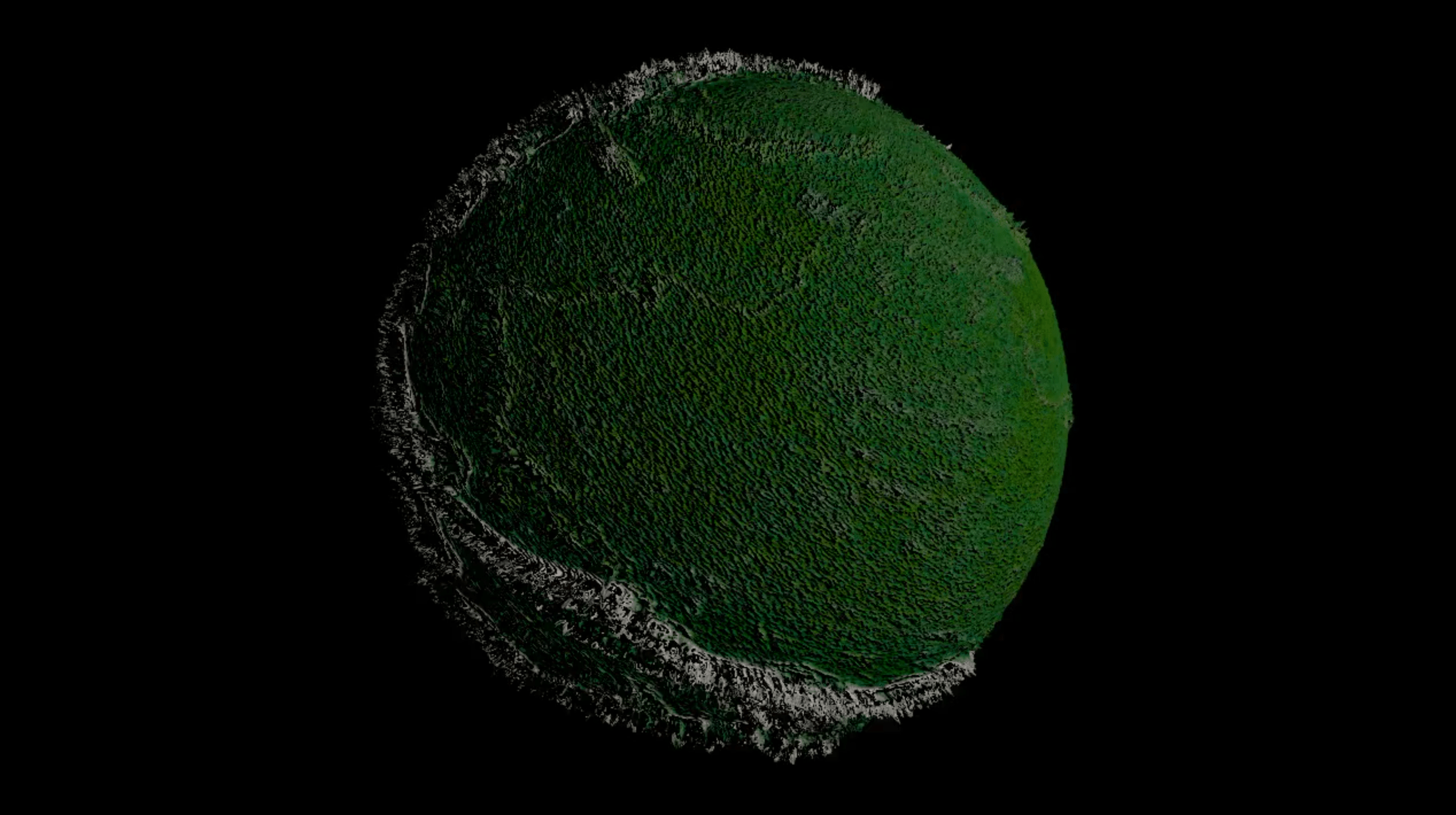Jose Miguel Luna, colombian musician, producer and multimedia artist. He focuses on the creation of electronic and experimental music and sound and visual performance in real time, mediated by technology, through programming tools. His work has been published in print and digital media, and has received recognition and awards in musical composition, dissemination, research and creation in the field of art, science and technology, through works in which he explores the soundscape, bioacoustics, ambient, glitch, electroacoustics and digital sound synthesis. His collaborations have included the artists: Carlos Román, Diego Serrano, Samantha García, Karina Delgado, Natalia Merlano, Melisa Vargas, Luis Fernando Sánchez, Mariam Vargas, Ana Estarita, Roberto García, Ana María Romano, Rodolfo Acosta.
The journey in sound experimentation began several years ago. At that time, sound exploration through digital audio processing occurred with programs such as Pure Data and MAX/MSP. It is impressive the amount of developments in new technologies, the relative ease with which today we have access to tools to create and produce. Digital Cosmos A/V was born in this way.
Some years ago, in my work, it was all about sound itself or forms itself, explored through the creation of electroacoustic music with object programming software, the incessant play of sound, abstraction and its self-referential logic. Losing myself and finding myself in free improvisation sessions, for example, or creating indeterminate pieces, where everything was changing from more or less fixed structures, or long sounds that surrounded the space through the instruments. I was betting on the freedom of those who participated in the concert experience to travel the sound path as they wished and experience their own sensations; more and more, it became necessary to think about those who came to the concert hall. This led me to spend several years in creation, in the exploration of sound and visual relationships, thinking more and more about the experience of the audience, wanting to transport the viewer to a universe of virtual acoustic spaces and digital landscapes, exploring the audio reactive, the interactions, the forces that attract and repel in an endless dance.
ARTKA Platform of Electronic Music and Digital Creativity
Then came the confinement by COVID 19, something threatened to deepen the isolation of each other, and so we settled into the digital experience. Although we want real and natural experiences, today, on a daily basis, we mediate our experiences with digital devices. In this context, the digital became a family reunion, a temple, a linguistic advisor, a memory, a financial, emotional, psychological consultant; our relationship with screens, communication networks and data absorbed us, and we increasingly seek to interpret and understand the world, the cosmos, the universe and its phenomena, through data, tools that seem to take control of our journey; but we are saved by our curiosity, our rebelliousness, our way of humanizing the interpretation of patterns, and our ability to marvel at the possibilities of combining different elements.
And in this need for connection, Digital Cosmos A/V began to take shape, exploring sound and visual media through various forms of organization, including electronic music, soundscape, bioacoustics and data visualization. Digital Cosmos A/V is inspired by the need for human connectivity, the same need we have transferred to digital connectivity, fueled by the impulse to consume, to produce, to connect both data and devices. These ideas pose systems, networks, that have been configured on a new (actually not new at all) level of the cosmos, for better or worse, it is what it is.
Thus began the creation process, resorting to the use of data, computational communication protocols and morphogenerator algorithms where visual and sound patterns are obtained that evoke the beauty and mystery of the universe, the forces that we cannot fully control and its fluctuation between order and chance, creating an immersive and evocative experience. The live performance from the Charlo Theatre, clearly evidences this intention: Live Set at Charlo Theatre.
Live Set Charlot Theatre
The sound references in Digital Cosmos A/V, just to mention some of the music we like, come from the electroacoustic and avant-garde creation of incredible musicians such as the Argentinean-Uruguayan Graciela Paraskevaídis, the Chilean José Vicente Asuar, the North American Pauline Oliveiros, and the American Pauline Oliveiros, George Crumb, music of Brian Eno, Max Cooper, Christian Loffler and research in bioacoustics to analyze audio recordings and extract data, harmonies, rhythms, frequency spectra and bring them to dance music, ambient and glitch, through audio synthesis, and obtain sounds in expansion and contraction, evocations on the sway of space and time, particles or gravitational fields, all within more or less conventional structures seeking to bridge that bridge of communication with the public.
In this search, Digital Cosmos sound resorts to difedifferent tools that have allowed to carry out this project, such as granular synthesis to decompose audio signals into small sound fragments like particles, called grains; each grain is a short sound unit and can be manipulated in various ways, such as using techniques such as slicing or slicing of samples or audio recordings. Another type of synthesis explored is spectral synthesis, based on the analysis and manipulation of the spectral components of a sound, instead of working with individual sound waveforms or with a “complete” sound by decomposing its frequencies. This is in addition to more traditional synthesis such as additive synthesis and subtractive synthesis used in analog environments and nowadays transferred to digital environments.
The glitch is another resource used, based on errors or failures in digital systems, made consciously. Instead of hiding them, these errors are embraced and used as part of the creative expression, which generates distortions of the rhythm or sound environments and synthesizers, which is transferred to the impact of the visuals generated by these failures that can manifest as impossible movements or unexpected visual forms from generative models and algorithms. These glitches can be fascinating and inspiring, challenging biomechanical limitations and stimulating new ideas for composition.
Thanks to digital processing we also have generative rhythmic patterns, which are a very accessible tool today in software tools, from plugins, virtual instruments (VST), paid or free programming tools (MAX/MSP, MAX for Live, Pure Data, Supercollider, etc) and work through algorithms or machine learning and probabilistic techniques. These emerge from rules and processes with predefined temporal structures, which allows working with sound patterns that evolve over time, and that can be fixed or not to established metrics and BPM, taking these data to visual parameters that participate in this evolution and are synchronized with the music, varying organically.
Show Digital Cosmos in Planetario Bogotá
We speak then of algorithms, this word, related today to ways in which social networks cross and analyze data to share content. Algorithms and processes to generate behavioral patterns and shapes are fundamental in digital art. Digital Cosmos uses these algorithms to create geometric, organic or abstract patterns, or through the same data, obtain video and sound signal processing. These algorithms can obtain determined, random results or degrade between the one and the other.
With these algorithms morphogenerator objects are established (computational objects that through processes generate shapes and patterns from data or specific rules) obtaining visual and sound structures that evoke the complexity and beauty of the cosmos, small audiovisual worlds and ways of organizing visual objects that can represent constellations, galaxies, particles, changing visual textures, and that immerse the viewer in a digital environment, seeds of data that reflect a universe of their own.
In Digital Cosmos A/V, these geometric patterns, organic or abstract, fractals (patterns repeat at different scales and are generated by mathematical iterations), and complex behaviors from input data and decision making based on what happens to the sound, result in visual projections, linear strokes, curves or shapes based on predefined rules, and print rotations, translations and scaling applied to basic shapes to create more elaborate patterns, or provide data that is applied to effects in other visual layers, pixels translated to the idea of grain in sound, dithering or illusion of tones and shadows using dots or lines, color channel filters, contrast or edges, procedural generation using data from the algorithms to simulate 3D terrain and generate mountain landscapes or digital terrain maps. This can be evidenced in some of the main compositions.
This is possible because programming tools have become very versatile, and allow us to include them in our computer workstations. For example the DAW Ableton Live, includes a “reduced” but powerful MAX/MSP engine, known as Max For Live, in which it is possible to work with parameter automation, OSC communications (basically sends information over the network), MIDI, MPE, receive or send synthesizer Voltage Control signals through an Arduino board or similar, transform them into another type of signal and route those signals to the parameters of a virtual synthesizer to control them or change the percentage of signal we receive or send to a parameter. The same happens with the Touchdesigner project, which also includes the possibility of working with OSC, MIDI, voltage control, DMX consoles, Arduino or similar boards, a Python engine, and the possibility of connection with Ableton Live, which makes it possible to work in parallel morphogenerator objects with those devices and virtual instruments that generate sound, rhythms, speeds, frequencies, data and connect them together for exploration and multimedia creation.
All these tools, sound and visual, converge through human interpretation, of an inner cosmos that was observing, reacting, recreating, hence all these layers and meta layers of ideas, feelings and data affect each other through digital objects, physical interfaces and musical instruments, to carry out the live show, an experience that seeks to connect us to each other, to immerse us in a sound and visual world through projections that are synchronized with the music in real time, and that invites us to flow in the now, becoming aware of our senses and the changing of our outer and inner cosmos, to share in a concert hall that instant in which we open this window and slowly evaporates.
Among its main presentations, there is the Digital Cosmos Show at the Planetarium of Bogota. Also, you can see a glimpse of this Digital Cosmos A/V experience thanks to the Arca Cultural Foundation that produces ARTKA Plataforma de Música Electrónica y Creatividad Digital, artistic programming that since 2016 has generated spaces for the convocation of producing musicians and visual artists, and has presented them on various stages in Bogota and Colombia in its LIVE ACT format, seeking to give continuity to its Conectados program (2010-2015), and opening a space for the composition and performance of live works of electronic music in all its subgenres, as well as visual arts in its various formats, produced from machines, software and/or specialized audio and/or video signal manipulation hardware.

